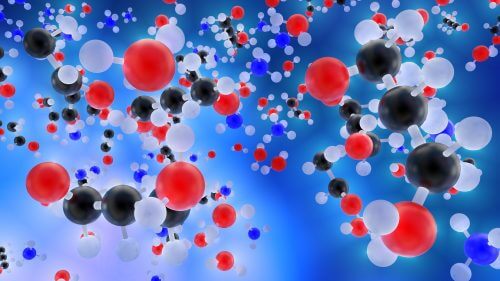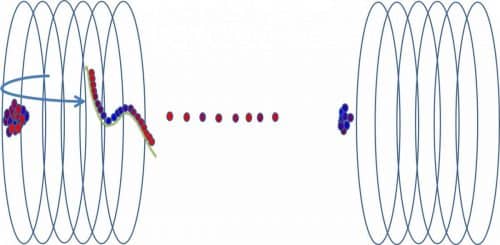Scientists from the Weizmann Institute recently developed a new and original way to cool ions and slow down their relative motion

Those who want to investigate the properties of atoms, encounter a difficulty. These atoms do not wait for scientists: they move, vibrate and sometimes (in a gaseous state) they even fly at enormous speed. This rapid movement is, in fact, the temperature of matter. In order to be able to study the atoms, the scientists must slow down - and thus cool - them. One way to do this is to use "laser cannons" that "shell" the atoms from all directions and "capture" them in a dark vacuum trap whose walls are made of light waves. Or, in the case of ions (atoms with an electric charge), capture them using electric and magnetic fields - and cool them using a laser.
But the faculty scientists Dr. Oded Haber and Dr. Michael Rappaport and the post-doctoral researchers Dr. Ritesh Kumar Gangwer and Dr. Kushik Shah from the laboratory of Prof. Daniel Zeifman In the Department of Particle Physics and Astrophysics at the Weizmann Institute of Science, they recently discovered and developed a new and original way to cool ions and slow down their relative motion.
Members of Prof. Zeifman's research group previously developed an improved version of an electrostatic "ion trap" for studying molecular reactions, and thus created a kind of storage area for ions, which is much smaller and cheaper than the usual storage coins. In the electrostatic trap, molecular ions move cyclically in a vacuum, at a speed of close to 10,000 km/h - and are cooled. These systems allowed the members of the group to create a cold, low-matter environment in the laboratory, similar to the conditions prevailing in interstellar space.
"The advantage of the method is that the process does not depend on the type of ion and its weight, so it can be used to relatively quickly cool any molecule, including large biological molecules and nanoparticles"

Naturally, in a group of ions that moves in cycles, there is a certain distribution of frequencies (which are equivalent to speed and temperature). At this stage, the scientists can "push" and accelerate the cold ions by sending voltage impulses, and separate the distribution of frequencies (temperatures), which means that within a short time, only the colder ions are accelerated and concentrated together. Additional "pushes" allow scientists to gradually get colder and colder ions. "But this process," says Dr. Haber, "is not cooling, but a kind of 'filtering' that allows us to sort the ions according to the temperature they reached."
But during experiments, the scientists discovered that in the electrostatic trap it is possible to increase the density of ions at the end of the trap up to 1,000 times the normal density. In the dense group, in the natural way, many collisions between the ions take place, and as a result the ions themselves share the energy between them. In a defined direction of the trap, a high correlation is created at this stage between the position of the ions in the group, and their energy, so that the coldest ions are found in the center of the group - which means that their temperature decreases at the expense of heating the ions located at the edges - so in summary, the number of cold ions increases. "This surprising process", says Dr. Haber, "is already considered cooling".
In the article thatThey published The scientists in the scientific journal "Physical Review Letters" PRL, they describe a series of experiments in which the ions reached a temperature of about a tenth of a degree above absolute zero. In the studies being carried out these days, the scientists are making fine adjustments to the system in order to reach - through the new cooling method - even lower temperatures.
Dr. Haber says that the advantage of the method is that the process does not depend on the type of ion and its weight, so that it can be used to relatively quickly cool any molecule, including large biological molecules and nanoparticles.
